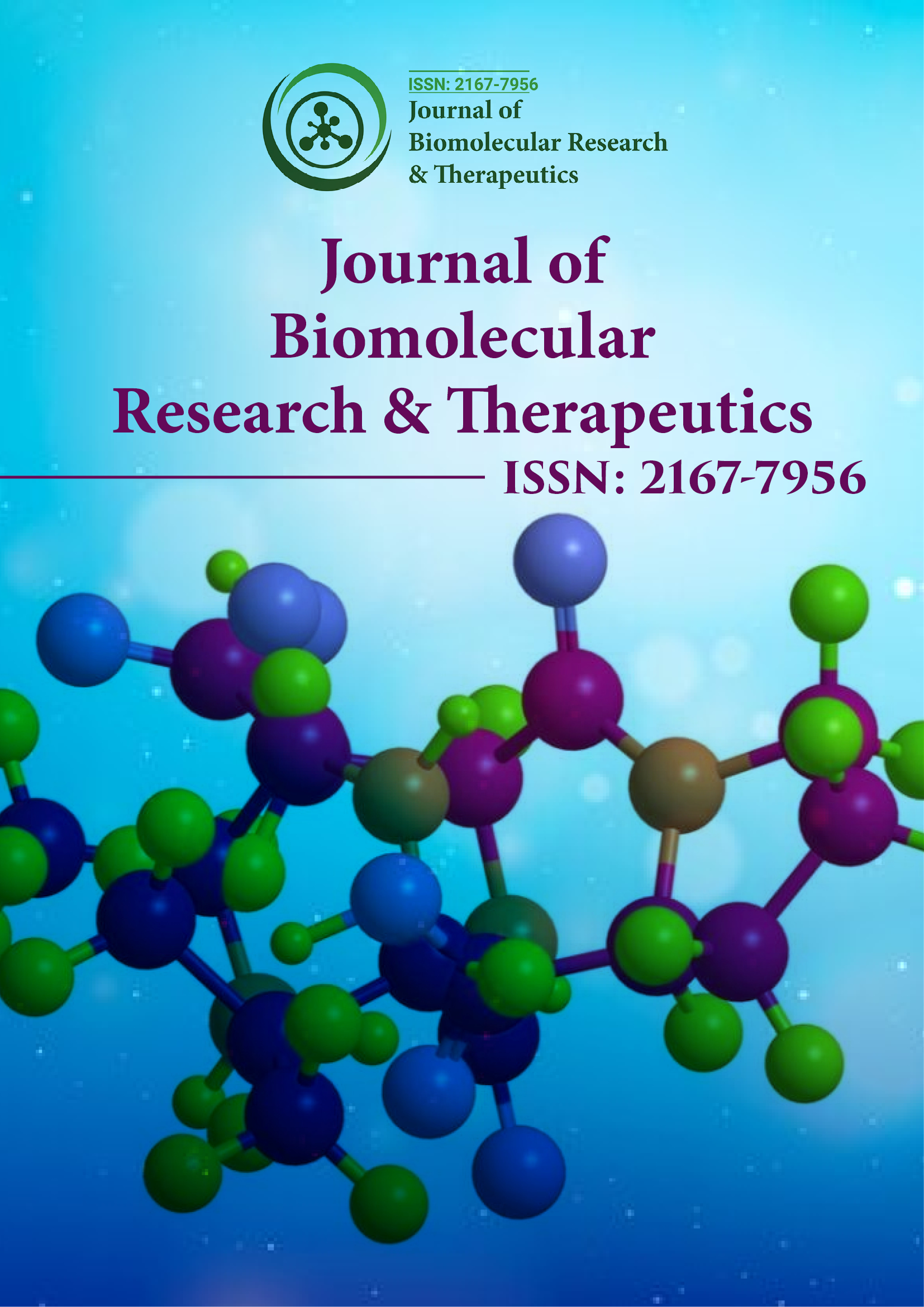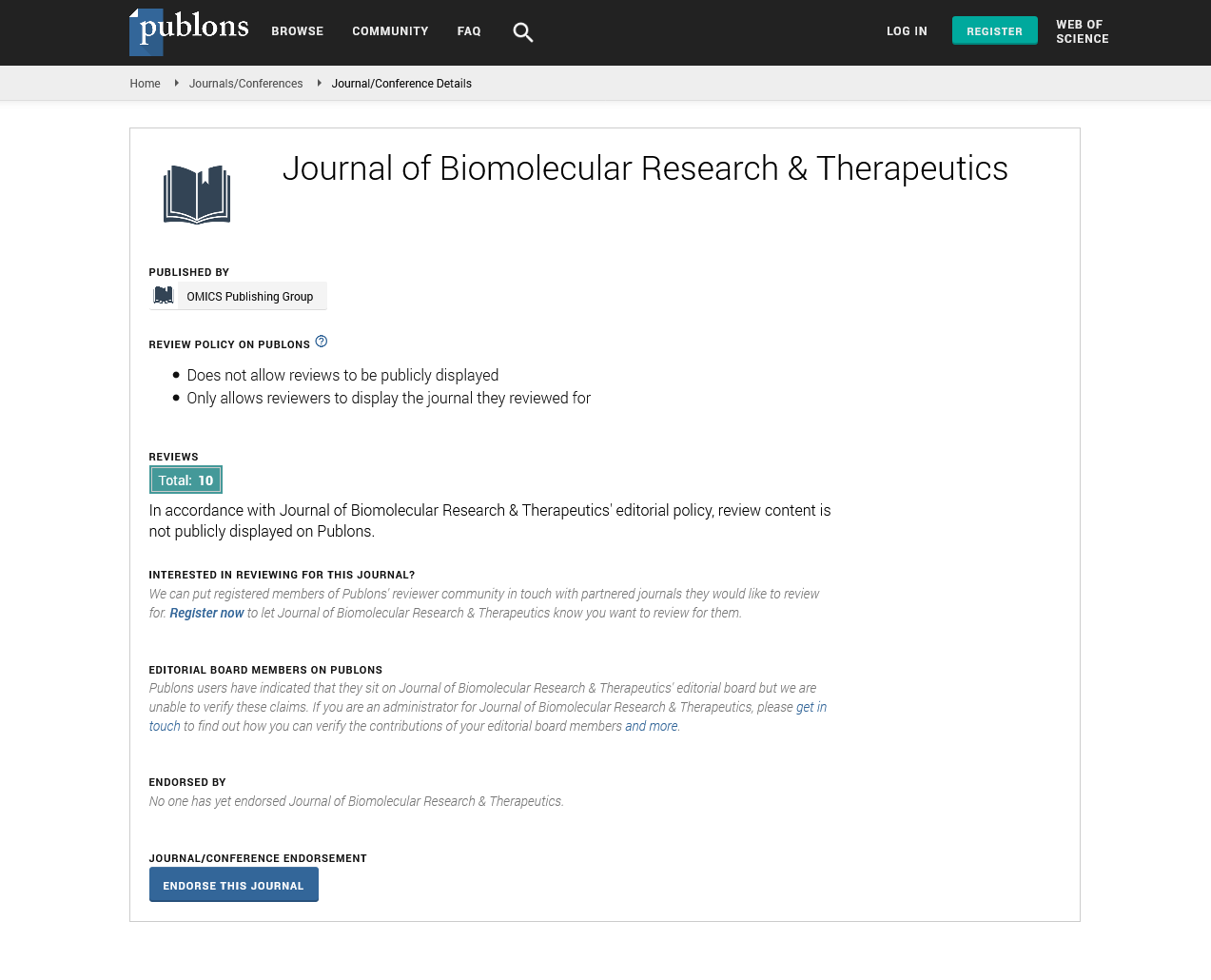Indexed In
- Open J Gate
- Genamics JournalSeek
- ResearchBible
- Electronic Journals Library
- RefSeek
- Hamdard University
- EBSCO A-Z
- OCLC- WorldCat
- SWB online catalog
- Virtual Library of Biology (vifabio)
- Publons
- Euro Pub
- Google Scholar
Useful Links
Share This Page
Journal Flyer

Open Access Journals
- Agri and Aquaculture
- Biochemistry
- Bioinformatics & Systems Biology
- Business & Management
- Chemistry
- Clinical Sciences
- Engineering
- Food & Nutrition
- General Science
- Genetics & Molecular Biology
- Immunology & Microbiology
- Medical Sciences
- Neuroscience & Psychology
- Nursing & Health Care
- Pharmaceutical Sciences
Commentary - (2024) Volume 13, Issue 6
Genetic Solutions for Degenerative Diseases: The Power of Multiplex Therapy
Toke Corydon*Received: 29-Nov-2024, Manuscript No. BOM-24-28351; Editor assigned: 02-Dec-2024, Pre QC No. BOM-24-28351 (PQ); Reviewed: 16-Dec-2024, QC No. BOM-24-28351; Revised: 23-Dec-2024, Manuscript No. BOM-24-28351 (R); Published: 30-Dec-2024, DOI: 10.35248/2167-7956.24.13.415
Description
Degenerative diseases, encompassing a wide spectrum of conditions that progressively impair the function of cells and tissues, represent a major challenge in modern medicine. These conditions, which include neurodegenerative diseases like Alzheimer’s, Parkinson’s and Huntington’s disease, as well as various muscular dystrophies and retinal degenerations, are often characterized by the progressive loss of function in specific tissues due to the malfunction or death of cells. Traditionally, the treatment strategies for these diseases have been limited, with many therapies only offering symptomatic relief or slowing down the disease's progression. In this context, multiple gene therapy presents an exciting avenue for directly modifying the expression of genes and proteins that contribute to degeneration, potentially altering disease outcomes at a molecular level.
Gene therapy aims to address the underlying genetic causes of diseases by introducing, altering, or repairing genes within a patient's cells. In the case of degenerative diseases, where dysfunction in specific molecular pathways leads to the degeneration of tissues, gene therapy holds the promise of restoring normal function or halting disease progression. Traditionally, gene therapy has focused on introducing single genes or modifying the expression of a single target. However, degenerative diseases often involve the interaction of multiple genetic factors, pathways and molecular players. This complexity necessitates a more nuanced approach-one that can simultaneously regulate the expression of multiple genes involved in the pathophysiology of these diseases.
Degenerative diseases often arise from a combination of genetic mutations, environmental factors and cellular dysfunctions. In neurodegenerative diseases, for example, the accumulation of misfolded proteins, mitochondrial dysfunction, oxidative stress and inflammation can all contribute to neuronal death and tissue degeneration. These diseases are rarely driven by a single gene defect but rather result from the interaction of various genes, protein networks and cellular processes. Consequently, single-target gene therapies may not be sufficient to address the multifactorial nature of these conditions.
Multiple gene therapy, which aims to regulate the expression of several genes simultaneously, offers a potential solution to this challenge. By targeting multiple molecular players that are involved in degenerative pathways, it may be possible to achieve more comprehensive disease-modifying effects.
One of the key innovations of multiple gene therapy is the use of viral vectors to deliver therapeutic genes into the target cells. Adeno-Associated Viruses (AAV), lentiviruses and other viral delivery systems have been widely used due to their ability to efficiently infect target tissues and deliver genes with relatively low immunogenicity. In multiple gene therapy, these vectors can be engineered to carry and deliver multiple therapeutic genes simultaneously. For example, an engineered viral vector could carry genes encoding neuroprotective proteins, antiinflammatory cytokines, or molecules that correct protein misfolding, all of which are implicated in neurodegeneration.
Furthermore, advancements in CRISPR-Cas9 and other geneediting technologies have provided researchers with the tools to not only deliver genes but also modify or correct genetic sequences within the patient’s own cells. This allows for precise modulation of gene expression, potentially correcting defects or reprogramming cells to perform more robustly in the context of degeneration. The precision of CRISPR and related techniques also makes it possible to target specific genes involved in disease progression, providing a more tailored therapeutic approach.
Conclusion
Multiple gene therapy represents a promising frontier in the treatment of degenerative diseases. By simultaneously targeting several genes involved in the complex molecular pathways of degeneration, this approach holds the potential to modify disease progression and improve patient outcomes. However, despite its potential, there are significant challenges related to vector delivery, gene regulation and long-term safety. As research in gene therapy continues to advance, we may see the emergence of more refined, effective treatments for degenerative diseases, offering hope for patients who are currently without viable options. The future of gene therapy lies not in treating symptoms, but in addressing the root causes of degeneration at the genetic and molecular levels, potentially transforming the landscape of regenerative medicine.
Citation: Corydon T (2024). Genetic Solutions for Degenerative Diseases: The Power of Multiplex Therapy. J Biomol Res Ther. 13:415.
Copyright: © 2024 Corydon T. This is an open access article distributed under the terms of the Creative Commons Attribution License, which permits unrestricted use, distribution, and reproduction in any medium, provided the original author and source are credited.

